YE OLD TIMBER TAVERN ON COURT ST (1926)
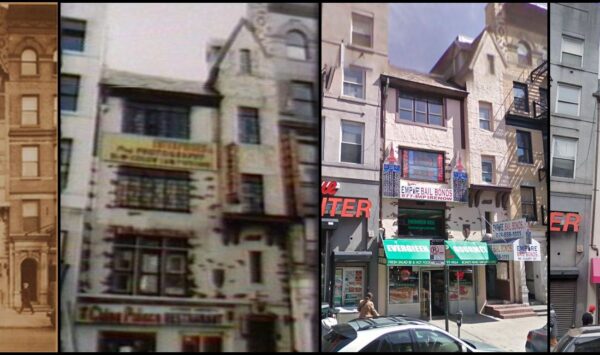
******************************************************************************************************************************** Brownstone Detectives investigates the history of our clients’ homes. The story you are about to read was composed from research conducted in the course of one of those investigations. Do you know the history of YOUR house? ******************************************************************************************************************************** Old English architecture is a rare sight in New York City. Rare, interestingly, because it once had a distinct place and time in the history of New York City’s 20th century architectural development. As tastes changed, however, its look – sometimes referred to as Tudor, Chester, Jacobean, Elizabethan, &c. – quickly fell into disfavor. Also, its reliance upon such materials as wood and stucco – those that can easily wear if not well maintained – forced owners of these structures to look for more long-term solutions to their maintenance. One of these solutions usually meant simply covering their more wearable materials with those that stood up better to weather. Although it would take nearly a century to do, such is the case with No. 93 Court Street, initially designed in the Old English style. “Brooklyn’s most distinctive office building,” started a Brooklyn Daily Eagle article in October of 1926, “may well be the description of the new home of Malkind & Weinstein, architects, which is being completed at 93 Court st., and is expected to be ready for occupancy in November.” The article went on to highlight the building’s design and beauty. “The building will carry out the style of Old English architecture in every detail in its exterior, while the […]
THE SPITE HOUSE OF MELROSE AVENUE (1899)
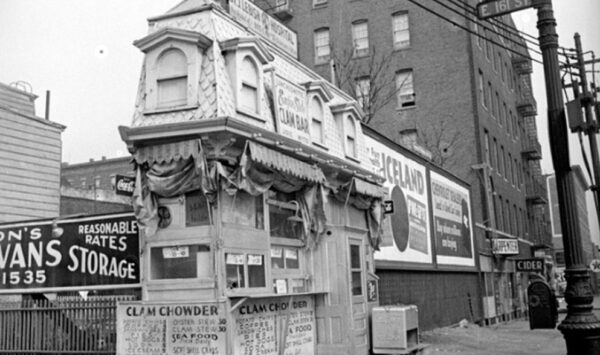
******************************************************************************************************************************** Brownstone Detectives investigates the history of our clients’ homes. The story you are about to read was composed from research conducted in the course of one of those investigations. Do you know the history of YOUR house? ******************************************************************************************************************************** Around the turn of the last century, Melrose Avenue in the Bronx was widened. The land that the city needed to perform this expansion was purchased from private owners. In some cases, however, it left some very-difficult-to-build-on lots. Such was the case with a lot on the corner of East 161st Street and Melrose Avenue. From The Strand Magazine, 1899. “This odd building stood on the corner of 161st Street and Melrose Avenue, New York City. It was a bit over 4ft. in depth, 17ft. frontage, and one and a-half storeys high, with a basement and sub-basement built under the broad sidewalk, extending to the curb. The house itself was of wood, on a steel frame, and had a slate roof. “Its owner was an eccentric tailor, who lived and carried on his trade below the street. The interior consisted of a small show-room, a store-room, and spiral iron stairway going down to the ‘lower regions.’ “The upper storey seems to have been constructed merely as a finishing touch. It was reached by an iron ladder from the store-room. The entire construction, appointments, and fittings were very ingenious, and were all the ideas of the owner. “The story of the house was that the original lot was cut away in opening […]
IT’S A WONDERFUL (BROOKLYN) LIFE (1946)
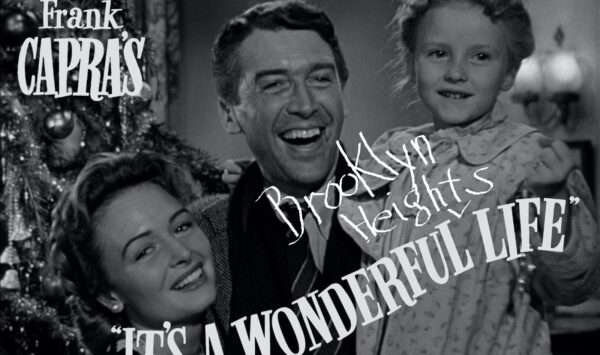
******************************************************************************************************************************** Brownstone Detectives investigates the history of our clients’ homes. The story you are about to read was composed from research conducted in the course of one of those investigations. Do you know the history of YOUR house? ******************************************************************************************************************************** Do you know there exists a connection between the enduring 1946 Christmas movie “It’s a Wonderful Life” and a certain brownstone in Brooklyn Heights? Many do not know this, but No. 88 Remsen Street was once the home of Philip Van Doren Stern, who wrote The Greatest Gift, a short story that was inspired by a dream that was reminiscent of the 1843 Charles Dickens novella A Christmas Carol. He began writing the story in 1939 and finished it in 1943, but was unable to find a publisher for it. He sent 200 printed copies to friends as Christmas cards in December 1943. His daughter, Marguerite Stern Robinson, recalled “I was in the third grade and remember delivering a few of these cards to my teachers and my friends … My father, who was himself from a mixed religious background, explained to me that while this story takes place at Christmas time, and that we were sending it as a Christmas card to our friends, it is a universal story for all people in all times.” The story was published as a book in December 1944. Stern also sold it to Reader’s Scope magazine, which published it in its December 1944 issue, and to the magazine Good Housekeeping, which published it […]
No. 2 EAST 75th ST, UES: A BRIEF HISTORY

******************************************************************************************************************************** Brownstone Detectives investigates the history of our clients’ homes. The story you are about to read was composed from research conducted in the course of one of those investigations. Do you know the history of YOUR house? ******************************************************************************************************************************** “Hoyt House Sold for Apartments” ran the title of the New York Times articles on Fri., 21 February 1941. “The purchase of a large East Side residence and plans for converting it into an apartment building of small suites were announced yesterday when Albert Klein bought the five-story dwelling at 2 East Seventy-fifth Street from the Hoyt Estate. “The house occupies a lot 30 by 102.2 feet, adjoining the southeast corner of Fifth Avenue, and was sold through Douglas L. Elliman & Co., brokers. The adjoining residence at 934 Fifth Avenue was formerly the home of Charles E. Mitchell, who bought it from the estate of A. M. Hoyt through the Elliman organization. Thomas J. Watson, president of the International Business Machines Corporation, recently bought 4 East Seventy-fifth Street.” According to the Upper East Side Historic Designation Report, No. 2 is a neo-French Classic with Tudor detailing style home was built in 1893-95 by Richard H. Hunt for Henry R. Hoyt. A rear addition was added in 1907, a new limestone façade at the foundation wall in 1910, and a rear penthouse in 1919. It is not clear whether it was during the 1941 conversion that the large and distinctive bay window extension on the front of the building was removed. […]
“DR. SEUSS” ON A CLINTON HILL BROWNSTONE
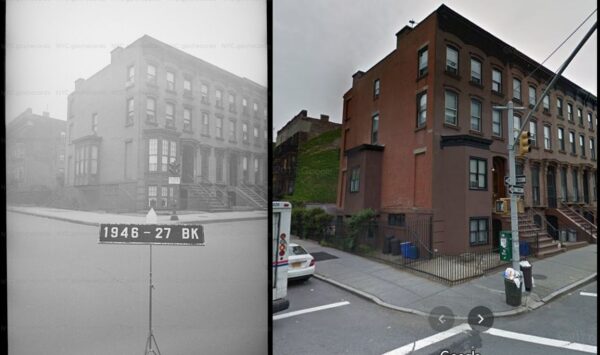
******************************************************************************************************************************** Brownstone Detectives investigates the history of our clients’ homes. The story you are about to read was composed from research conducted in the course of one of those investigations. ******************************************************************************************************************************** What happened here, It is not clear. Some window bays Have lost their glaze. I wonder why They had to nix it. For it wern’t broke, So t’wern’t to fix it. – Dr. Seuss, on the bay windows of No. 280 Lafayette Ave, Clinton Hill, Brooklyn. Follow @BrownstoneDetec Share ———————————————————————————————————————– The Brownstone Detectives Brownstone Detectives is a property research agency. Our mission is to research, document, and save the histories of our clients’ historic properties. From this research, we produce our celebrated House History Books. Each book is fully cited, featuring detailed narratives and colorful graphics, and is designed to bring the history of any house to life. Contact us today to begin discovering the history of your home.
THE RAREBIT FIEND OF 23 MIDDAGH ST (1906)
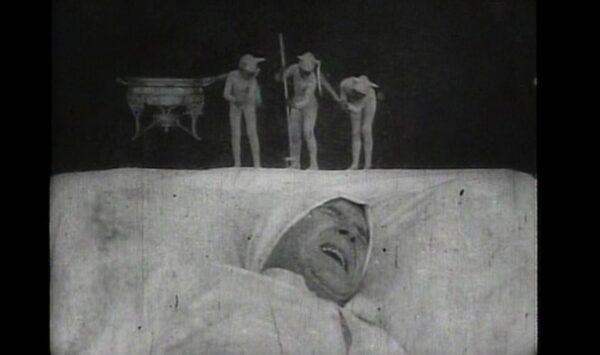
******************************************************************************************************************************** Brownstone Detectives investigates the history of our clients’ homes. The story you are about to read was composed from research conducted in the course of one of those investigations. Do you know the history of YOUR house? ******************************************************************************************************************************** At No. 23 Middagh Street in Brooklyn Heights, in the early 20th century, lived the veteran actor, John P. “Jack” Brawn, who starred in upwards of 24 motion pictures. Most notably, he starred in the first ever trick motion picture, 1906’s “The Dream of a Rarebit Fiend.” Brawn lived on Middagh with his wife, Ethel Brooke Ferguson, who had been his leading lady on stage and whom he married in 1903. THE DREAM A trippy movie, “The Dream of a Rarebit Fiend” is about a man, played by John P. Brawn, the titular “fiend,” who has an all-too-real dream after consuming a large meal of Welsh Rarebit. His dream, rather a nightmare – the result of an upset stomach, the film implies – was likely supposed to represent the penance that could expect to be paid for the sin of gluttony connected with living a life of overabundance. The director of the short film, Edwin S. Porter, based the film on a comic strip, using it as a vehicle to present his mastery of the technical aspects of film-making, which displayed a good deal of hands-on special effects work – double exposures, miniatures and other camera trickery. Few cinema-goers, it is certain, would have seen a picture like this at the time. […]
THE PAINTED LADY OF SACKETT STREET (1958)
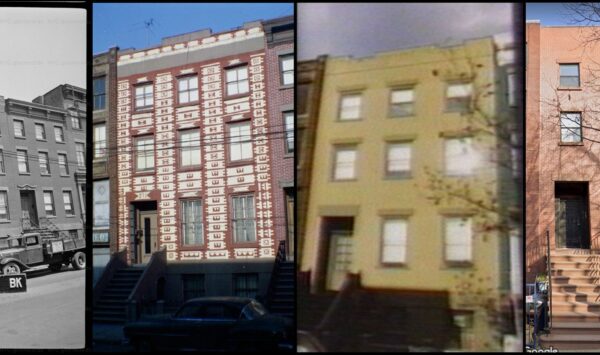
******************************************************************************************************************************** Brownstone Detectives investigates the history of our clients’ homes. The story you are about to read was composed from research conducted in the course of one of those investigations. Do you know the history of YOUR house? ******************************************************************************************************************************** Houses as old as the historic brownstones of New York City have had a lot of time to experience change – change of ownership, change of status, as well as physical change. Much of that change often occurs on the inside of these buildings as their occupancy type changes. The most prevalent change of this type that occurs over time is the change of a property from a single family house to a mutiple dwelling or boarding house. Just outside the Cobble Hill Historic District, sits a much-altered brownstone on Sackett Street between Court and Clinton Streets, No. 275. Constructed pre-1855 as a one-family house it would experience many change over the years. Its original address was No. 160. Its original owner appears to have been William H Perry, a stock broker on Wall Street. By the 1860s, the Forsyth family lived in the Sackett Street rowhouse. Orlando Forsyth was a jeweler who, in the 1840s, had had a showroom on Fulton Street at No. 99. The house would begin taking boarders in the 1870s, continuing at least through most of the 20th century. THE LADY GETS A FACELIFT At face, however, the physical changes of No. 275 seem to be the most striking. While, in its original state, it resembled […]
WHEN 90M TONS OF SNOW FELL ON NYC (1947)
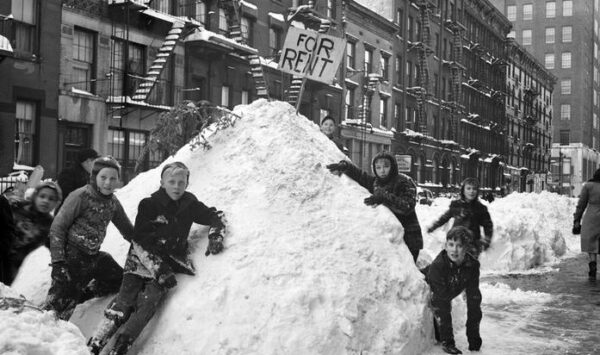
******************************************************************************************************************************** Brownstone Detectives investigates the history of our clients’ homes. The story you are about to read was composed from research conducted in the course of one of those investigations. ******************************************************************************************************************************** We’ve all heard of the Great Blizzard of 1888. But in 1947, 99M tons of snow fell on #NYC in one day. Watch this 3-minute newsreel. Follow @BrownstoneDetec Share ———————————————————————————————————————– The Brownstone Detectives Brownstone Detectives is a property research agency. Our mission is to research, document, and save the histories of our clients’ historic properties. From this research, we produce our celebrated House History Books. Each book is fully cited, featuring detailed narratives and colorful graphics, and is designed to bring the history of any house to life. Contact us today to begin discovering the history of your home.
BEECHER’S BROWNSTONE GETS A RENO (1940)
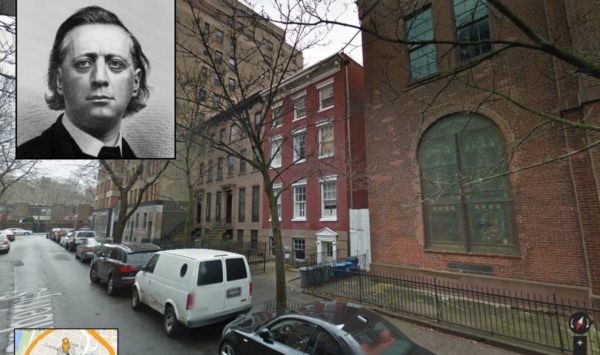
******************************************************************************************************************************** Brownstone Detectives investigates the history of our clients’ homes. The story you are about to read was composed from research conducted in the course of one of those investigations. Do you know the history of YOUR house? ******************************************************************************************************************************** In 1940, Nora Sullivan embarked upon a renovation of 66 Cranberry Street. It was an historic brownstone built in the mid-1800s, at some point being occupied by the Joel Osteen of his day, the great abolitionist preacher Henry Ward Beecher. Beecher probably selected the house to be close to his job next door, as the phenomenally popular preacher at Plymouth Church. Before the house had been built, like many other structures in old Brooklyn Heights, two wood frame buildings had graced the spot. These particular structures had been used as a school for boys. Later in the 1840s, though, a “foundling,” deposited on the building’s stoop “in a basket,” was “discovered in the front yard of Mr. Henry Ruggle,” the owner at the time of 66 Cranberry in its previous iteration. The scandal, though, lay in the fact that, upon the baby’s arrival at the mayor’s office – where abandoned babies were apparently brought back then – it was discovered that when the “habilments” were examined, they were “found to be of fine quality and of elaborate workmanship” which were indicative that “its late possessors are an unworthy portion of the ‘upper ten.’” Amongst the other discoveries in the baby’s basket was a “fine cambric handkerchief marked ‘E,’” which was “the […]
MR. DINKINS’ BULGING FACADE (1977)
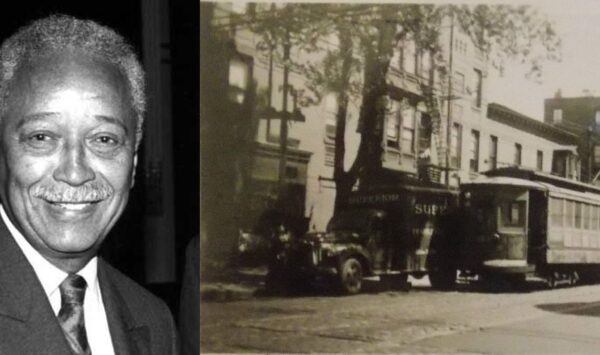
******************************************************************************************************************************** Brownstone Detectives investigates the history of our clients’ homes. The story you are about to read was composed from research conducted in the course of one of those investigations. Do you know the history of YOUR house? ******************************************************************************************************************************** Have you ever wondered what once filled those large lots at the corners of Halsey Street and Ralph Avenue? Every house has a history. You know it is there, but the clouds of the past work to obfuscate the present. Uncovering that history takes some detective work, but with a little time and some gumshoe sleuthing, the answers can be discovered. With regard to 774 Halsey Street – what do we know happened? A fire? Decay? Gas explosion? What do we know about the life of the building? What was it used for? Who owned the building and who lived there? We looked to clues from newspaper archives, fire insurance maps, and physical evidence to unravel that history. This is our report: WHAT HAPPENED to 774? A 4-story brick apartment building – 774 Halsey Street – sat on the southeast corner of the Halsey/Ralph intersection. It had a commercial space on the ground floor facing Halsey Street and one at the rear of the building at 153 Ralph Avenue. The building housed a number of apartments the addresses/entrances of which were on the Ralph side of the building at 149 Ralph Avenue. The apartments of the Ralph-facing side of the building had stacked bay windows, one on each floor. South of […]